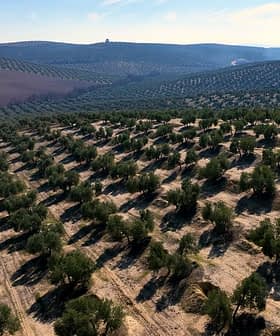Olive Council: Rising Consumption Will Spur Price Recovery
 The current olive oil price crisis will ease and it will be on the back of promotion that woos new consumers, the International Olive Council said today.
The current olive oil price crisis will ease and it will be on the back of promotion that woos new consumers, the International Olive Council said today.
In a rare public statement from its executive secretariat, the IOC also said that the problem was not structural but had its roots in variables — such as domestic production, stocks and consumption — in producer countries, particularly Spain.
The statement, titled “Some thoughts on current olive oil prices” comes as the crisis captures more world media attention in the wake of a page one splash by the Financial Times on May 28.
The newspaper attributed the low producer prices in Spain, Italy and Greece to falling domestic consumption — due to the economic crisis and competition from cheaper vegetable oils — coinciding with a bumper harvest in Spain and consequent glut.
In its contribution to the debate, the IOC agreed that producers in Spain, Greece and Italy are currently “getting a low price – €1.75, €2.38 and €1.84/kg respectively – for the extra virgin olive oil they produce.” But it sees hope on the horizon via growth in global demand.
“Olive oil accounts for approximately two percent of world consumption of vegetable oils, which is rising. As the middle and upper classes expand in numerous developing countries and become increasingly diet and health conscious, it is reasonable to think that the current price crisis is not structural and will be eased by action to promote olive oil to consumers who are not familiar with it or use it only occasionally” it said.
Organizations including the IOC and Spain’s Interprofesional del Aceite de Oliva are engaged in various campaigns to increase olive oil consumption both in new markets, such as the United States, Brazil and China, and traditional ones such as Spain and France.
Current outlook for 2011/12
Based on the latest available figures, the IOC expects world olive oil production to be up 302,000 tons this crop year — an increase of 10 percent on last year. This spells a likely year-end global surplus of 1 million tons, a season-on-season increase of 34 percent.
Consumption is forecast to dip 6.6 percent in Greece and to hold steady in Italy but to rise in Spain — the latter the chief driver in the expected 7 percent growth in overall EU consumption.
“Spain’s position as a country with surplus output, combined with the fact that demand is concentrated in the distribution sector whereas supply is fragmented, means that any changes in its variables tend to have repercussions on both national and international prices” the statement said.









